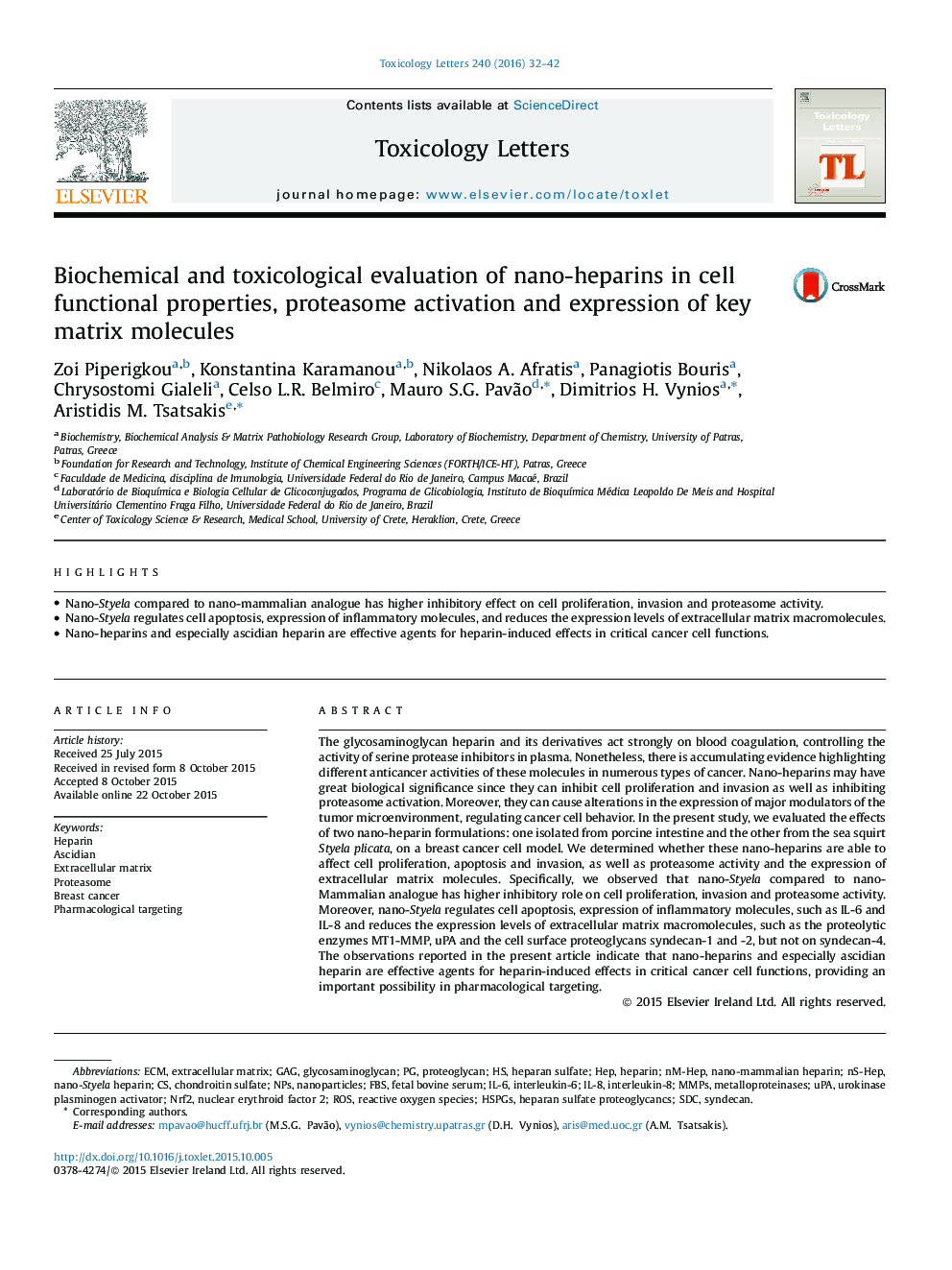| کد مقاله | کد نشریه | سال انتشار | مقاله انگلیسی | نسخه تمام متن |
|---|---|---|---|---|
| 2598589 | 1562632 | 2016 | 11 صفحه PDF | دانلود رایگان |
• Nano-Styela compared to nano-mammalian analogue has higher inhibitory effect on cell proliferation, invasion and proteasome activity.
• Nano-Styela regulates cell apoptosis, expression of inflammatory molecules, and reduces the expression levels of extracellular matrix macromolecules.
• Nano-heparins and especially ascidian heparin are effective agents for heparin-induced effects in critical cancer cell functions.
The glycosaminoglycan heparin and its derivatives act strongly on blood coagulation, controlling the activity of serine protease inhibitors in plasma. Nonetheless, there is accumulating evidence highlighting different anticancer activities of these molecules in numerous types of cancer. Nano-heparins may have great biological significance since they can inhibit cell proliferation and invasion as well as inhibiting proteasome activation. Moreover, they can cause alterations in the expression of major modulators of the tumor microenvironment, regulating cancer cell behavior. In the present study, we evaluated the effects of two nano-heparin formulations: one isolated from porcine intestine and the other from the sea squirt Styela plicata, on a breast cancer cell model. We determined whether these nano-heparins are able to affect cell proliferation, apoptosis and invasion, as well as proteasome activity and the expression of extracellular matrix molecules. Specifically, we observed that nano-Styela compared to nano-Mammalian analogue has higher inhibitory role on cell proliferation, invasion and proteasome activity. Moreover, nano-Styela regulates cell apoptosis, expression of inflammatory molecules, such as IL-6 and IL-8 and reduces the expression levels of extracellular matrix macromolecules, such as the proteolytic enzymes MT1-MMP, uPA and the cell surface proteoglycans syndecan-1 and -2, but not on syndecan-4. The observations reported in the present article indicate that nano-heparins and especially ascidian heparin are effective agents for heparin-induced effects in critical cancer cell functions, providing an important possibility in pharmacological targeting.
Journal: Toxicology Letters - Volume 240, Issue 1, 5 January 2016, Pages 32–42
